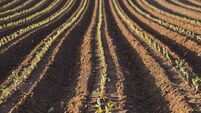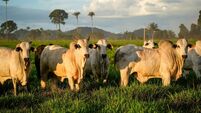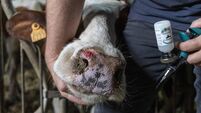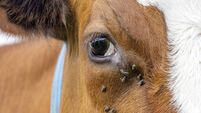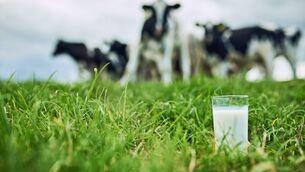They’ve been getting a lot of rap in recent times for their emissions output, but slurry and litter from the North’s 1.7m cattle, 2m sheep, 716,800 pigs, and 24.5m poultry could help to lower the region’s carbon footprint.
The wide-scale anaerobic digestion and secondary processing of the North’s livestock slurry could have the potential to meet up to 80% of the region’s gas fuel needs, while also significantly lowering its carbon footprint, a new scientific study has found.
Working alongside the Centre for Advanced Sustainable Energy and industry partners, researchers at Queen’s University Belfast and the Agri-Food and Biosciences Insitute to carry out spatial mapping and life cycle assessment to evaluate the potential of biomethane for the decarbonisation of the gas grid.
The study also included input from Phoenix Natural Gas, Agri-AD and Enerchem.
Anaerobic digestion is the process through which bacteria can break down organic matter such as animal manure, wastewater, food waste or forage to produce biogas and biofertiliser.
While it has remained somewhat of a rarity in the Republic, the industry has become a popular on-farm diversification in recent years north of the border with the extra income often used to subsidise other parts of the enterprise.
One of the key findings of the study was that Northern Ireland had the potential to generate significantly greater volumes of renewable gas than previously thought.
In total, there is estimated to be over 6,000 GWh worth, which equates to more than 80% of Northern Ireland’s Gas Distribution Network demand.
The researchers also found that using biomethane produced through anaerobic digestion of livestock manure and underutilised grass silage could lead to a significant greenhouse gas emission reduction of around 845,000 tonnes of carbon dioxide in Northern Ireland — which is the emissions equivalent of driving a family-sized diesel car around the globe 170,000 times.
If realised, it would also mark a major step towards reducing Northern Ireland’s estimated 21.4m tonnes of annual greenhouse gas emissions.
They concluded that, in addition, anaerobic digestion and the secondary treatment of livestock manure and grass silage would also have secondary benefits in terms of better managing ammonia and phosphate levels in the region — two of the biggest challenges currently facing the environmental sustainability of the North’s livestock sectors.
A separate report, which was carried out by AFBI based on 2017 figures, previously concluded that when the region’s entire food system was examined (for example, food and leather imports and fish landed) the region’s phosphorus surplus reached as high 10,300 tonnes of P.
That year, researchers found a total of 1,530 tonnes of P was lost into water bodies, with 62% of this originating from agricultural sources.
However, the question has yet to be answered as to whether mass-scale anaerobic digestion would stack up economically. Researchers explained that further work is needed on nutrient balances was needed to assess the overall economic costs against potential benefits.
Professor David Rooney, dean of internationalisation and reputation at Queen’s University Belfast, said it was a particularly timely opportunity for a number of reasons.
“Tackling issues of climate change and rising fuel costs has led to an increased interest in regionally generated renewable gas and decarbonising gas use has never been more important,” he said.
“At Queen’s, this is something we have been working on for many years and our latest study highlights the unique opportunity we have in Northern Ireland.
“We have high agricultural intensity and there is huge scope to work closely with the sector to capture problematic emissions and redirect them to where they have greater value to the regional economy.
“We have shown that not only could 80% of the current gas demand be displaced, but that the approach would also help to deal with other problematic emissions which impact water quality.
“Future work will more closely examine the costs as well as economic and environmental value.”
Iain Hoy, energy transition manager at Phoenix Natural Gas, added: “6,000 GWh of biomethane is a vast source of renewable energy with the potential to heat over half a million homes every year.
“Investing in the production of this indigenous energy source and injecting it into the gas network supports the decarbonisation of our homes and businesses, protects the biodiversity of our rural landscape and will create significant numbers of new jobs throughout the rural economy — supporting the Executive’s target of doubling the renewable energy economy by 2030.
“Biomethane’s ability to offer multiple benefits to many different sectors makes it extremely valuable, and alongside Hydrogen, it will perform a critical role in the NI Gas Network’s pathway to net-zero.”

